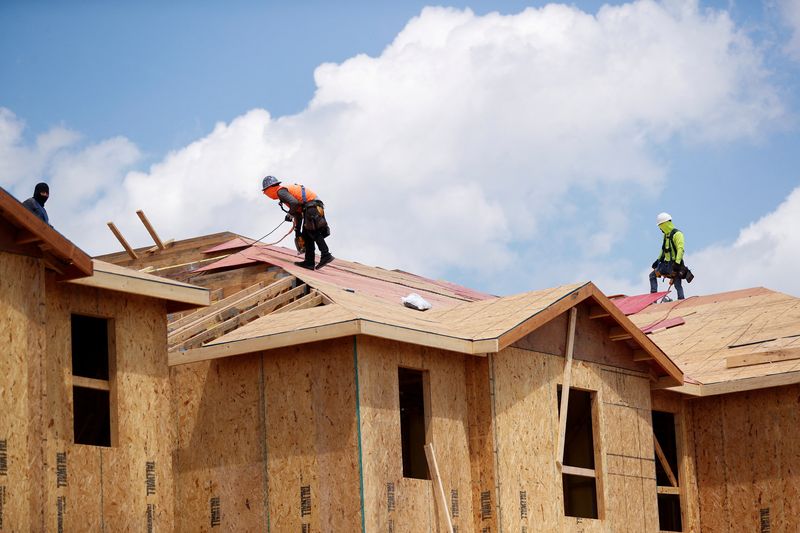(Reuters) -U.S. homebuilding fell more than expected in September and the number of new groundbreakings for single-family homes tumbled to the lowest level in more than two years, according to Census Bureau data out Wednesday that showed the ongoing impact of the Federal Reserve's interest rate hikes on the housing market.
Housing starts dropped 8.1% to a seasonally adjusted annual rate of 1.439 million units last month. Data for August was revised down to a rate of 1.566 million units from the previously reported 1.575 million units. Economists polled by Reuters had forecast starts would come in at a rate of 1.475 million units.
New single-family home projects fell 4.7% to an annual rate of 892,000, the lowest level since May 2020, and are unlikely to see a rebound soon with mortgage rates at a 20-year high and material bottlenecks still dogging builders. Permits issued for new single-family houses fell 3.1% from August to an annual rate of 872,000, the lowest level since June 2020.
"We expect starts to moderate further in (the fourth quarter) to ... 1.420 million from 1.461 million" in the third quarter, Nancy Vanden Houten, lead U.S. economist at Oxford Economics, wrote. "The risk, however, is for a slower pace of starts, given the weak handoff at the end of Q3 and pessimism among homebuilders who are seeing buyers retreat to the sidelines at a time when they continue to face elevated cost pressures."
RISING RATES
The Fed's aggressive monetary policy tightening has significantly weakened the housing market, with most indicators falling to levels last seen during the first wave of the COVID-19 pandemic in the spring of 2020. In contrast, other sectors of the economy, like the labor market, have shown resilience despite the U.S. central bank's attempts to cool demand.
Since March, the Fed has lifted its benchmark policy rate from near zero to a range of 3.00%-3.25%, and the fed funds rate is now expected to end the year in the mid-4% range with inflation yet to show signs of abating materially.
Mortgage rates have risen even higher. The 30-year fixed mortgage rate averaged 6.94% last week, the highest since 2002, up from 6.81% a week earlier, according to the Mortgage Bankers Association.
Multi-unit project starts took a step back in September, dropping 13.1% on the month but that followed a gain of more than 30% in the month before, and they remain well above the pre-pandemic trend. Steep home prices have kept more potential buyers out of the market and lifted demand for rental units, and builders have started more apartment projects this year, with starts of projects for five or more units up 16.5% from a year earlier.
"While single-unit starts have collapsed under the weight of higher mortgage rates, rental demand continues to be very strong," economists at Jefferies wrote. "Double-digit rent increases create a strong incentive to build more multi-family units, even as financing costs have risen."

Permits for future home construction rose 1.4% to a rate of 1.564 million units in September, but the gain was all in multi-unit projects. Residential fixed investment declined at its steepest pace in two years in the second quarter, contributing to the second straight quarterly drop in gross domestic product during that period.
Homebuilding is likely to remain on the back foot for the rest of the year. A survey on Tuesday showed the National Association of Home Builders/Wells Fargo Housing Market sentiment index fell for the 10th straight month in October.